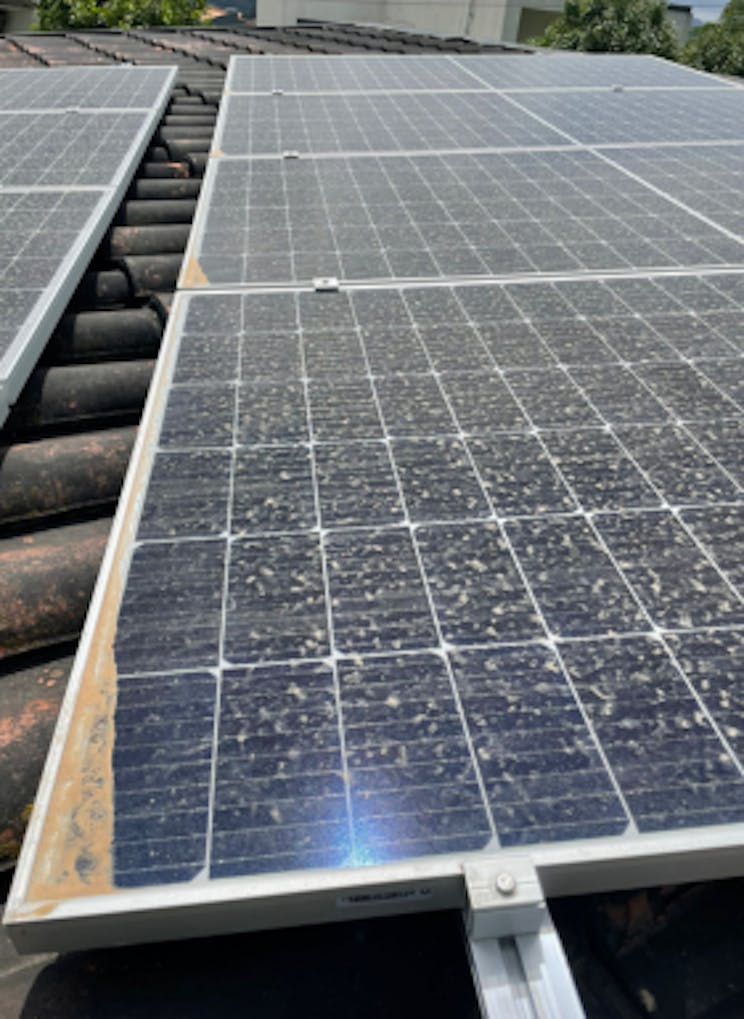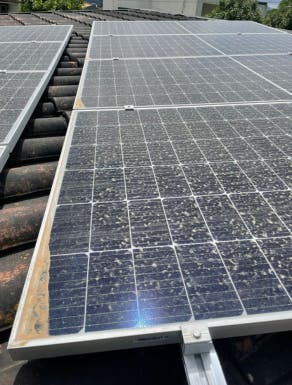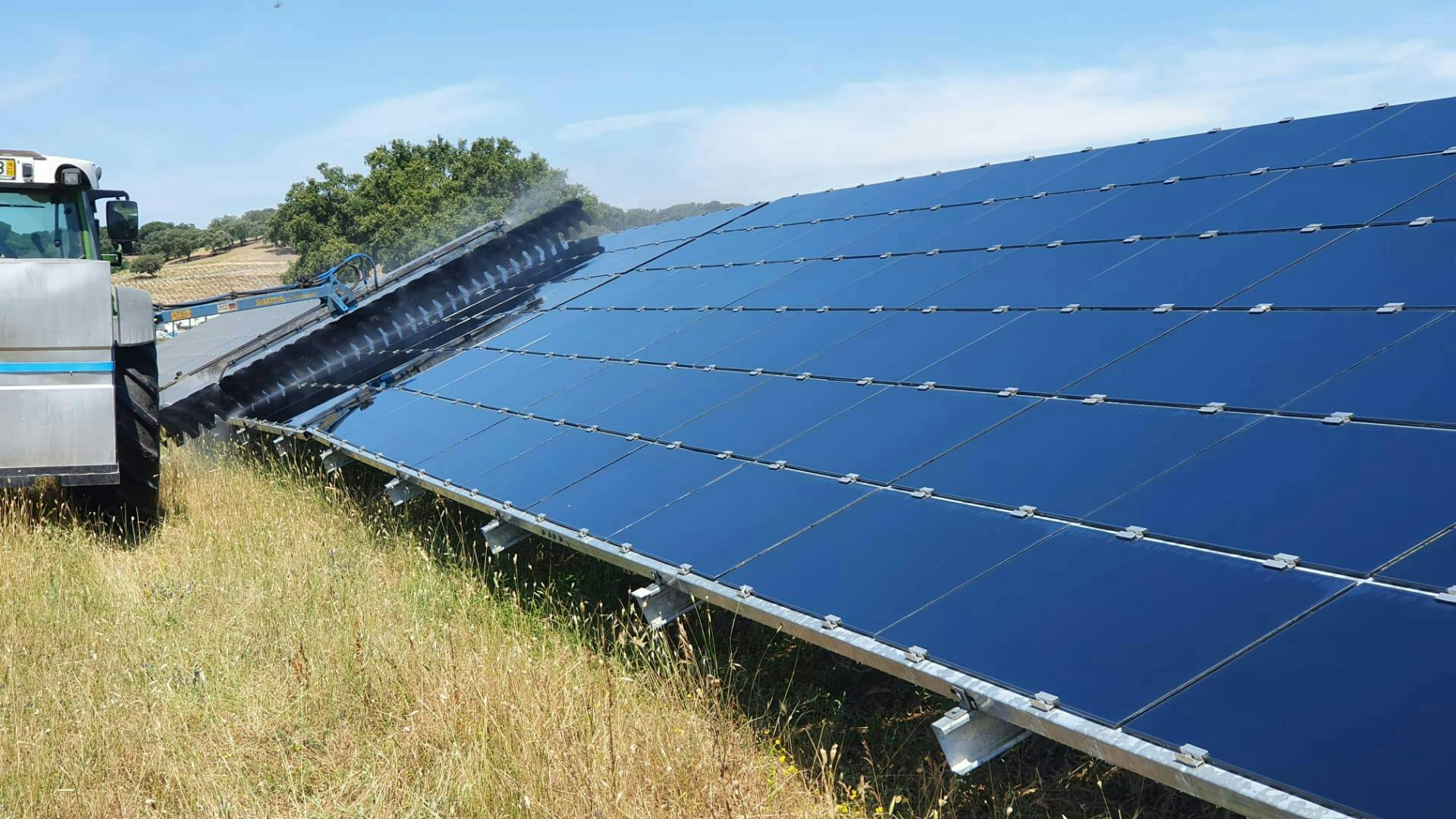R. Dr. Francisco Sá Carneiro
Zona Industrial de Bouro - Letra C
4740-010 Esposende, Portugal

The Rise of Drone-Assisted Cleaning for Solar Panels
The surge in solar panel installations across residential, commercial, and industrial settings has highlighted the importance of efficient maintenance methods. Among the innovations addressing this need is drone-assisted cleaning. This method offers great potential, but also raises questions about how practical and effective it is. Is it the solution for specific scenarios, or could it redefine the industry?
Advantages of Drone-Assisted Cleaning
Drone-assisted cleaning has introduced an interesting approach to solar panel maintenance. Here are some of the reasons it’s becoming more popular:
1. Improved Safety
One of the key benefits of drone technology is its ability to eliminate the need for workers to operate at heights or on dangerous/high rooftops. By removing the need for personnel to physically access the panels, drones minimize the risks of falls, injuries, and accidents.
2. Easy Accessibility to Panels
Solar panels are often installed in difficult-to-reach locations, such as steep roofs with limited walkways. Drones can easily navigate these areas, making them a safe tool for cleaning.
3. Reduced Equipment Requirements
Traditional cleaning methods often require lifting platforms, scaffolding, or safety harnesses, which can be time-consuming and costly to set up. Drones eliminate the need for such equipment, simplifying the process and reducing operational costs.
Challenges and Disadvantages of Drone-Assisted Cleaning
Despite its advantages, drone-assisted cleaning has its limitations. Understanding these challenges is crucial for determining whether this method is suitable for broader implementation.
1. Achieve High Cleaning Quality
Touchless cleaning methods are always more challenging to achieve the same cleaning quality as one done with brushes (e.g., WFP or robot). This can lead to use of unsafe methods such as aggressive chemicals that are not certified for PV panels or high pressure cleaning.
2. Potential Damage to Panels
High-pressure water streams, often used by drones, can cause damage to the delicate surfaces of solar panels. This approach is often discouraged by manufacturers to prevent microcracks, blown silicone seals or damages to the anti-reflective coating (ARC).
3. Water Usage
Drone-assisted cleaning methods often require large amounts of water, which can raise concerns in regions where water conservation is a priority. Addressing this challenge involves exploring innovations in water-efficient cleaning technologies for drones.
4. Time Efficiency
While drones can access hard-to-reach areas, their cleaning speed may not match traditional methods in large-scale operations. For utility scale solar farms, multiple drones may be required, increasing complexity and costs.
5. Specialized Training and Licensing
Operating cleaning drones requires trained personnel, often with specialized licenses and certifications. Training and certification can be an additional consideration for companies when exploring this technology.
Where Does Drone-Assisted Cleaning Fit?
Whether drone-assisted cleaning becomes the industry standard or remains a niche solution depends on several factors. Innovations in drone technology, such as the development of low-pressure cleaning systems and water-saving techniques, could address some of the current limitations. Additionally, as regulations improve, clearer rules for using drones in solar panel maintenance may make it easier for companies to adopt this cleaning method.
For now, drone-assisted cleaning is particularly well-suited for niche applications, such as:
- Hard-to-reach installations on steep roofs or high buildings.
- Spraying specialized cleaning agents on large installations with no access to the panels in the middle.
- Specialized cleaning needs such as panels on floating plants or in AgroPV installations.
The Future of Drone-Assisted Cleaning
The use of drone technology in solar panel maintenance is an exciting development in the renewable energy sector. It offers the potential for efficient cleaning and inspection, particularly in hard-to-reach or expansive installations. However, the technology also faces some disadvantages, such as limitations in water efficiency and the complexity of ensuring effective, low-pressure cleaning, which must be carefully addressed to ensure consistent results. These challenges, alongside concerns like cost and regulations, may influence the role drones play in the industry. Whether drones will become a niche solution for specific scenarios, or a common industry standard will depend on how these challenges are addressed in the coming years. As this field continues to evolve, it raises important questions about the future of solar panel maintenance.
What’s your take on drone-assisted cleaning? Could drones change the industry, or will they remain just one of many tools? Share your thoughts!




